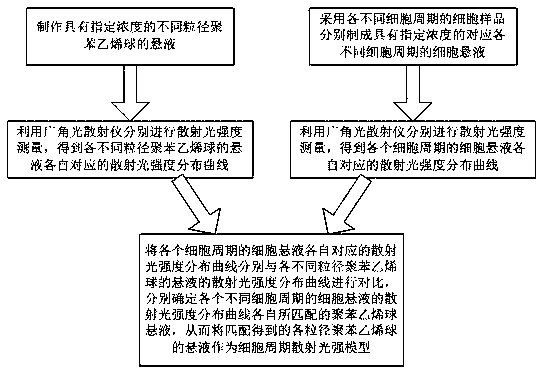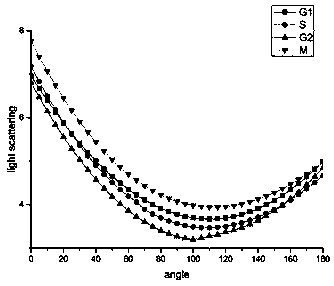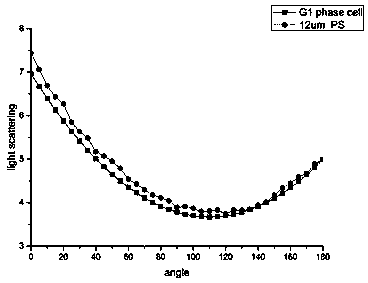A Method for Establishing a Cell Cycle Scattering Light Intensity Model Using Polystyrene Balls
A technology of polystyrene balls and cell cycle, applied in the measurement of scattering characteristics, etc., can solve problems such as difficult, difficult to survive, and constantly changing cell cycle, and achieve the effects of stable properties, good universality, and good technical application prospects
- Summary
- Abstract
- Description
- Claims
- Application Information
AI Technical Summary
Problems solved by technology
Method used
Image
Examples
Embodiment
[0038] Adopt the method of the present invention, set up the cell cycle scattered light intensity model of HeLa cell, specifically comprise the following steps:
[0039] 1) The pre-made specified concentration is 10 5 polystyrene spheres / mL suspensions of polystyrene spheres with different particle sizes were put into glass test tubes, shaken up separately, and measured by wide-angle light scattering instrument at 0 The scattered light intensity at intervals of 5° in the range of ~180° uses a laser as the light source, and the laser wavelength of the laser is 532nm. According to the measurement results, the corresponding scattered light intensity of the suspensions of polystyrene spheres with different particle sizes is obtained distribution curve.
[0040] 2) Use HeLa cell samples in G1 phase, S phase, G2 phase and M phase, respectively press 10 5 HeLa cell suspensions corresponding to G1 phase, S phase, G2 phase and M phase were prepared at the specified concentration of 1...
PUM
| Property | Measurement | Unit |
|---|---|---|
| wavelength | aaaaa | aaaaa |
Abstract
Description
Claims
Application Information
 Login to View More
Login to View More - R&D
- Intellectual Property
- Life Sciences
- Materials
- Tech Scout
- Unparalleled Data Quality
- Higher Quality Content
- 60% Fewer Hallucinations
Browse by: Latest US Patents, China's latest patents, Technical Efficacy Thesaurus, Application Domain, Technology Topic, Popular Technical Reports.
© 2025 PatSnap. All rights reserved.Legal|Privacy policy|Modern Slavery Act Transparency Statement|Sitemap|About US| Contact US: help@patsnap.com



